UK: Spurge Hawkmoth; Leafy Spurge Hawkmoth, F: Sphinx de l'Euphorbe, D: Wolfsmilchschwärmer, RUS: Molochainyi Brazhnik, S: Vitsprötad Skymningssvämare, NL: Wolfsmelkpijlstaart, CZ: Lišaj pryšcový, H: kutyatejszender, E: esfinge de la lechetrezna, PL: Zmrocznik wilczomleczek, FIN: Tyräkkikiitäjä, I: sfinge dell'euforbia, HR: mlječikin ljiljak, DK: Vortemælksværmer, EST: Piimalille-vöötsuru.
Celerio euphorbiae conspicua Rothschild & Jordan, 1903, Novit. zool. 9 (Suppl.): 720.Type locality: Beirut, Syria [Lebanon].
(Taxonomic note. (i) There is a disjunct population of Hyles euphorbiae in the Asir Mountains of Saudi Arabia which may warrant subspecific status. Until more specimens are available, it is tentatively placed in Hyles euphorbiae conspicua. Larvae and adults from most of the Asir are almost indistinguishable from those from Lebanese montane populations, although most adults are slightly darker in colour. However, some adults from the area just south of Abha are, in appearance, quite clearly intermediate between Hyles euphorbiae conspicua and Hyles tithymali himyarensis (Boisduval, 1834) (Meerman, 1988b) from Yemen, and probably represent hybrids. The larvae are also intermediate in colour.
Taxonomic note. (ii) To complicate matters, hybrids between Hyles euphorbiae conspicua and Hyles siehei (Püngeler, 1903) have been found around Karaman, Turkey.)
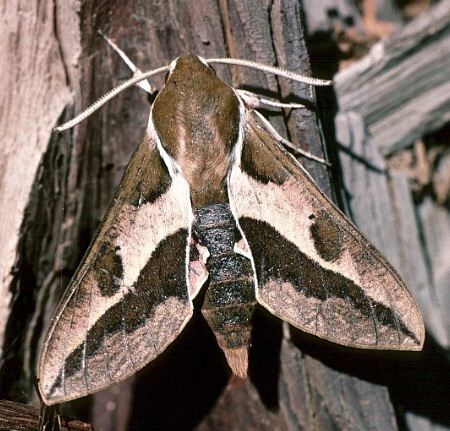

Holarctic; western Palaearctic region. Pleistocene refuge: Monocentric -- Syrian and/or Syroeremic refuge.
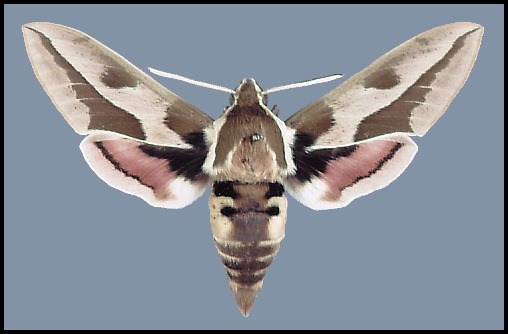
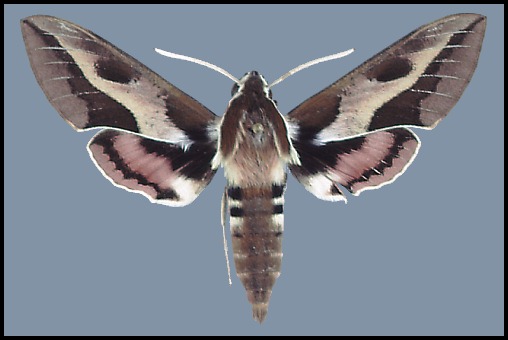
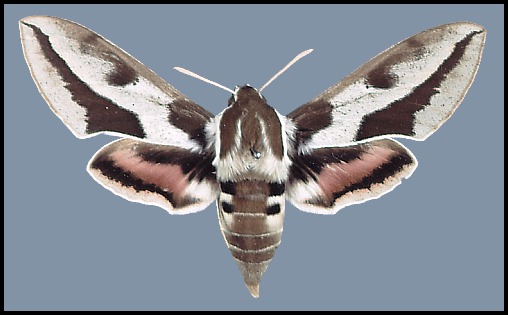
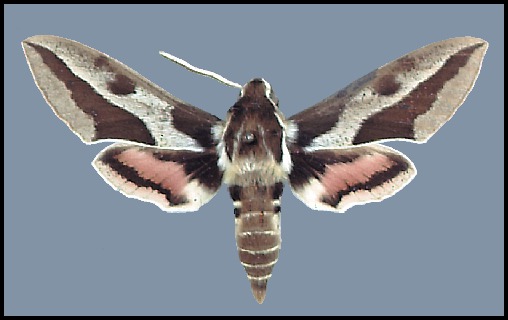
Wingspan: 60--85mm. As illustrated in Pittaway (1993), but those from drier and warmer areas are smaller and lighter in colour, resembling Hyles tithymali deserticola (Staudinger, 1901). Those from cool mountainous regions tend to be darker. Individuals may also be heavily flushed with pink.
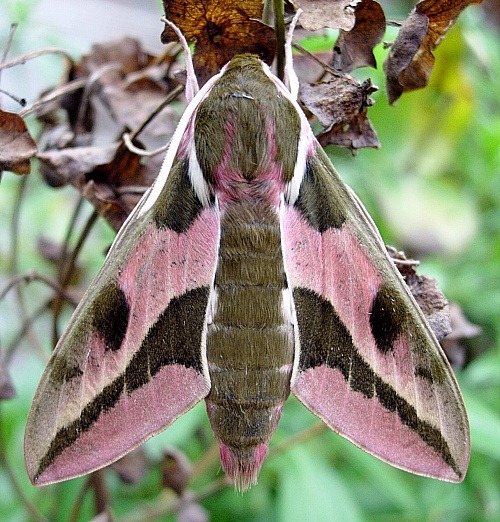
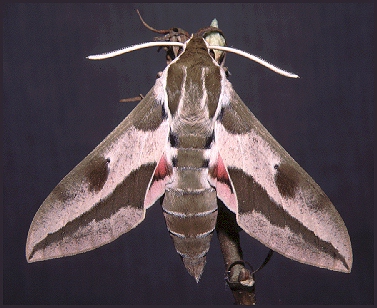
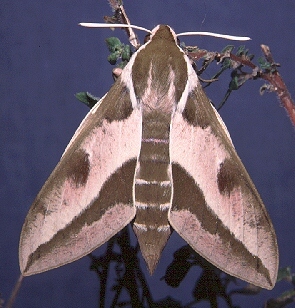
An inhabitant of mountain chains running northwards from Israel through Lebanon and Jordan into Turkey and Iraq, and eastwards across northern Iran to Turkmenistan, where it frequents warm mountain-sides, river-banks and valley floors. Behaviour similar to that of subsp. Hyles euphorbiae euphorbiae (Linnaeus, 1758).
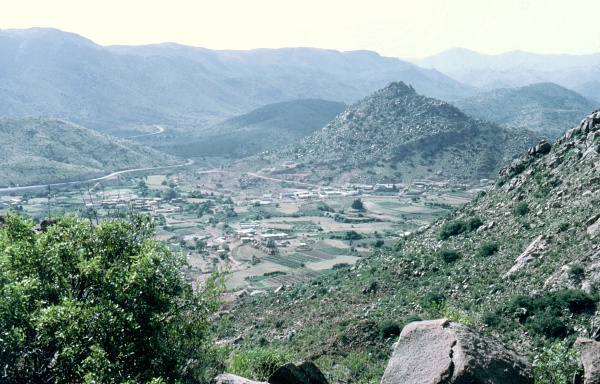
Multivoltine; April to October.
OVUM: As subsp. euphorbiae. Laid in clusters of up to 10 on the underside of hosplant leaves.
LARVA: Full-fed, 75--90mm.
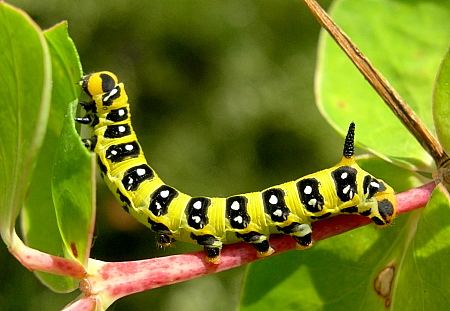
Resembles that of subsp. euphorbiae from Greece and Spain, with much of the black pigment being replaced by orange or greenish yellow. Some may even more closely resemble those of Hyles nicaea (de Prunner, 1798). At high altitudes, however, most larvae are blacker and more like central European forms of euphorbiae; such is the case with the Asir Mountain race from Saudi Arabia.
Larvae from Shiraz, Iran, which produced pale, silvery adults resembling Hyles robertsi, were indistinguishable from larvae from southern Turkey which produced typical Hyles euphorbiae conspicua (Rothschild & Jordan, 1903) (Pittaway, pers. obs.).
Occurs from April until November.
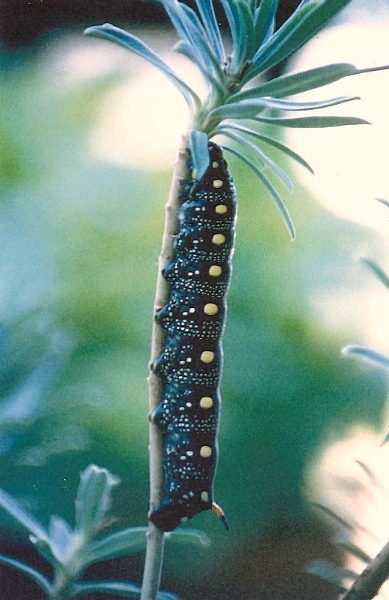
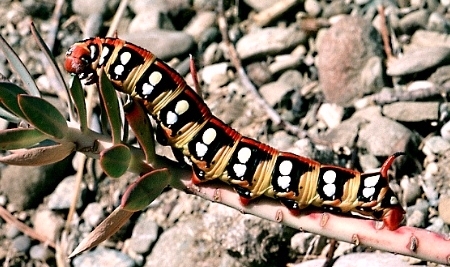
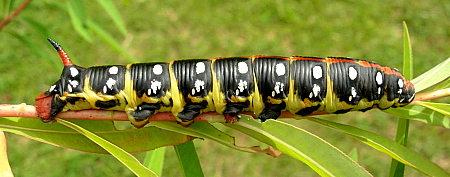
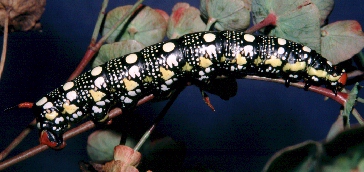
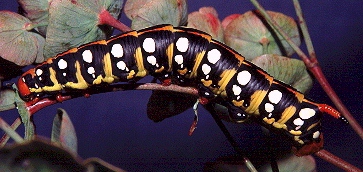
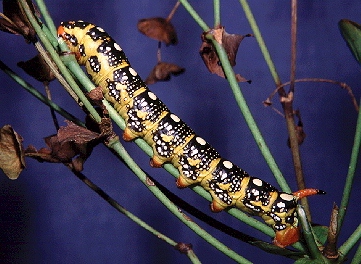
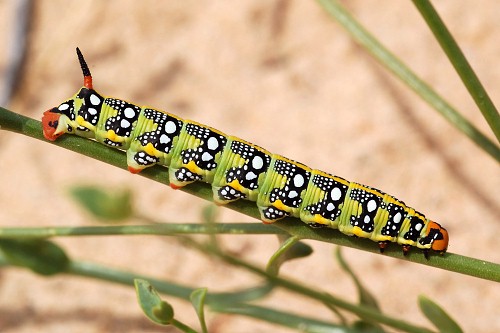
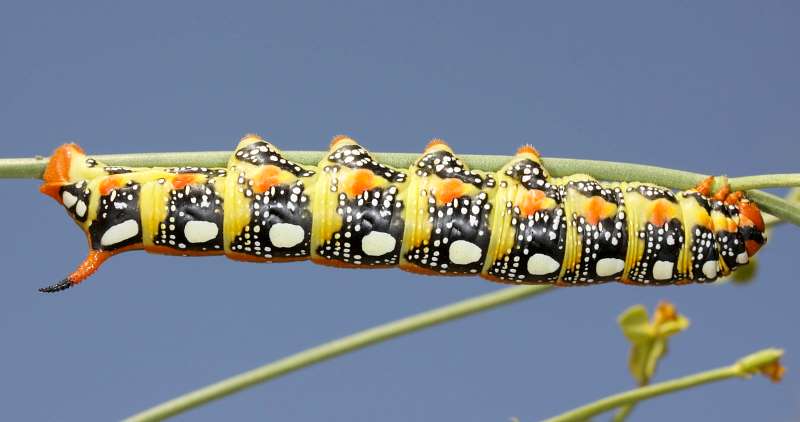
Hostplants. Herbaceous Euphorbia spp. In northwestern Iran on Euphorbia macroclada and Euphorbia denticulata (Karimpour et al., 2006).
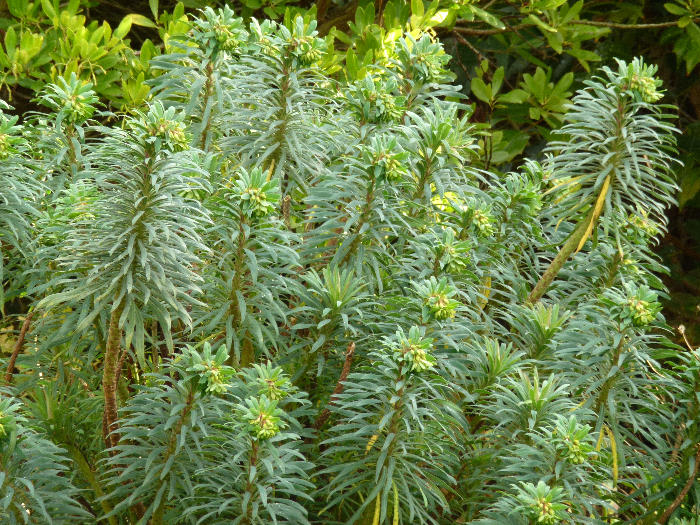
PUPA: Indistinguishable from subsp. euphorbiae. Overwinters as a pupa.
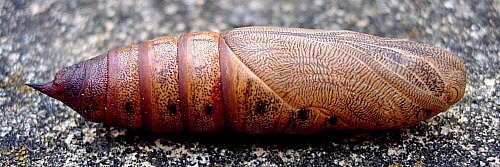
Tachinidae: Chetogena aegyptiaca (Villeneuve, 1923) [syn. Spoggosia aegyptiaca (Villeneuve, 1923)], Drino galii (Brauer & Bergenstamm, 1891), Exorista grandis (Zetterstedt, 1844), Masicera sphingivora (Robineau-Desvoidy, 1830).
Fathipour et al. (2005) report Exorista grandis from northwestern Iran, with adults present in late May. Karimpour et al. (2006) report both this species and Masicera sphingivora from the same area.
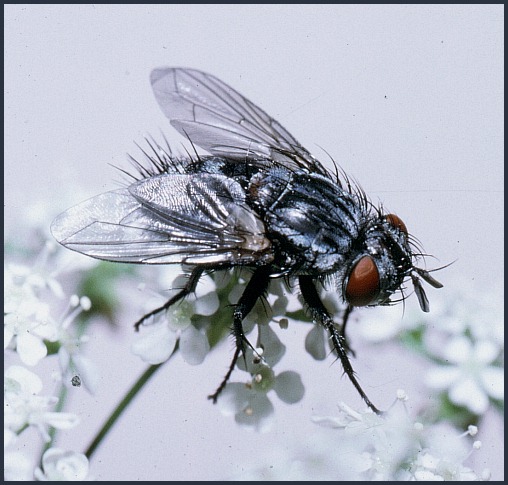
Israel (Eisenstein, 1984; Müller et al., 2005b), Jordan (Müller et al., 2005a; Katbeh-Bader, A., 2014), Lebanon (Zerny, 1933; Ellison & Wiltshire, 1939), Syria, southern and eastern Turkey (Daniel, 1932; de Freina, 2012; Kemal & Koçak, 2014; Kemal, Kızıldağ & Koçak, 2018), Armenia (Pascal Régnier, pers. comm. 2013; Wąsala & Zamorski, 2015) and northern Iraq into northwestern Iran (Danner, Eitschberger & Surholt, 1998; Fathipour et al., 2005; Lehmann & Zahiri, 2011; Didmanidze, Petrov & Zolotuhin, 2013).
Also northeastern Iran (Daniel, 1961; Daniel, 1971; Kalali, 1976), the Kopet-Dagh Mountains of Turkmenistan (Derzhavets, 1984; Danov & Pereladov, 1985) and Iran, and into Uzbekistan. Based on mtDNA studies and larval colour forms, these more easterly populations are Hyles euphorbiae, even though many adults are pale and silvery and look superficially like Hyles robertsi. As mtDNA studies only track the maternal lineage, these populations may eventually be found to represent a hybrid zone. This is indicated by the mix of larval colour forms around Mashhad in northeastern Iran; forms unique to both Hyles robertsi and Hyles euphorbiae conspicua are present, as well as intermediates.
Extra-limital range. An isolated population exists in the south-western mountains of Saudi Arabia (Wiltshire, 1986), where, to a very limited extent, it has hybridized with Hyles tithymali himyarensis along the southern edge of it's range.
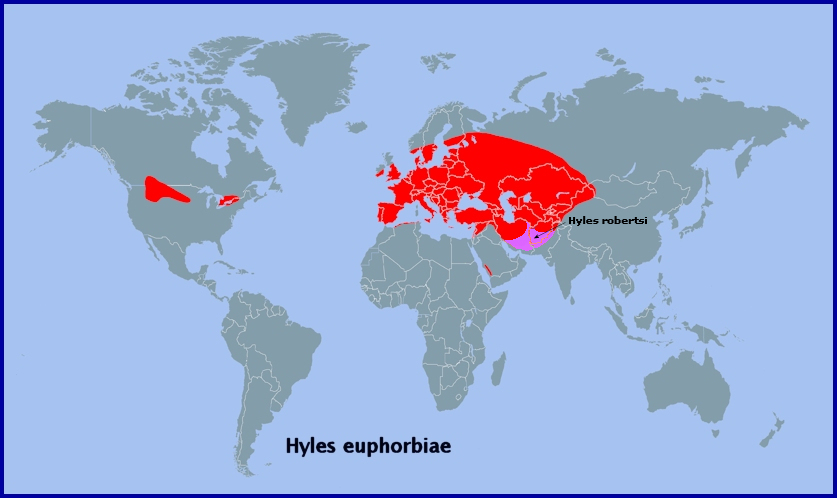
As subsp. Hyles euphorbiae euphorbiae, from western, southern and central Europe to the Urals, southern western Siberia, the western fringes of the Altai Mountains and western China (Xinjiang Province). Also, northern Turkey, Transcaucasia, eastern Kazakhstan, eastern Afghanistan (Swinhoe, 1885), Kyrgyzstan, Tajikistan, northwestern Pakistan (Daniel, 1971; Rafi et al., 2014) and the Pamirs (Ebert, 1969). Also introduced into many areas of the U.S.A. and Canada.
 Return to species list
Return to species list